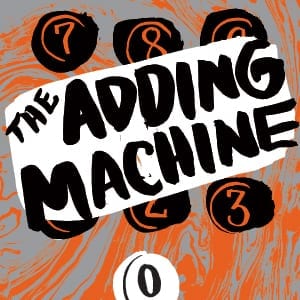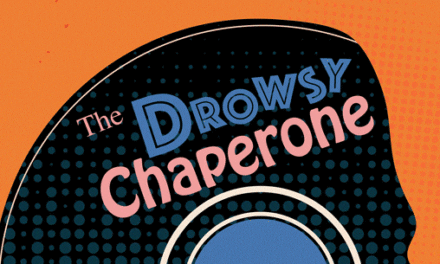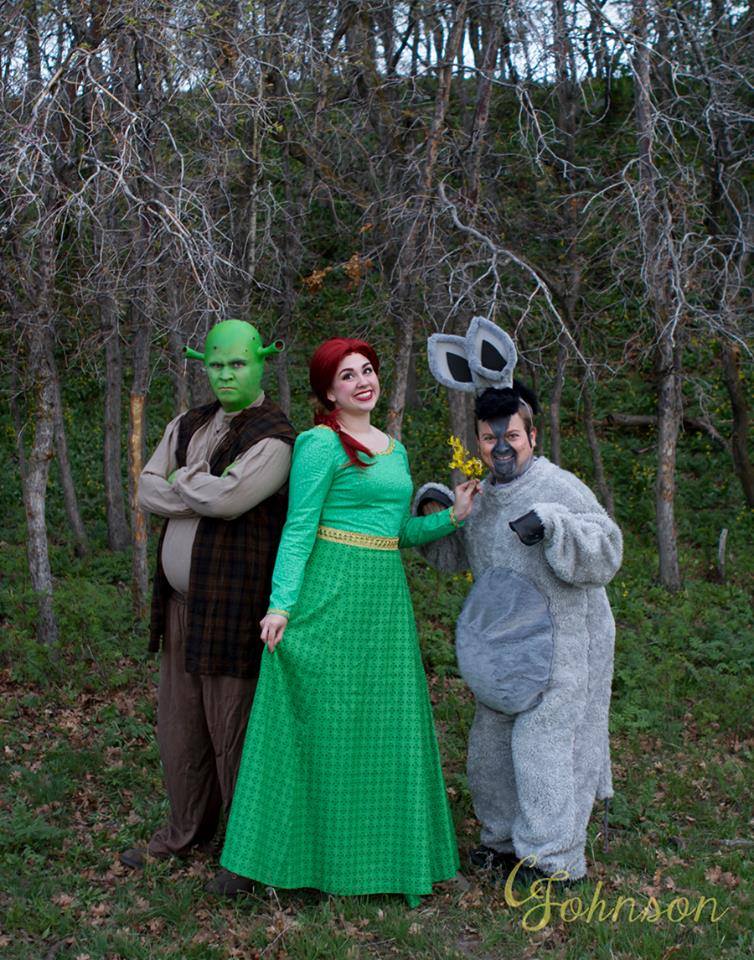 SALT LAKE CITY — Sometimes we forget that theatre is art. We round up a group of actors and present a show and it’s judged by how believable we were, how beautiful the set was, and how appropriately the ticket cost.
SALT LAKE CITY — Sometimes we forget that theatre is art. We round up a group of actors and present a show and it’s judged by how believable we were, how beautiful the set was, and how appropriately the ticket cost.
And then you see a show like The Adding Machine, by Elmer Rice, at the Babcock Theatre at the University of Utah. That’s when you remember that even though the actors are believable, the set is gorgeous, and the ticket is reasonable…there’s something more. There’s something about this particular production that reminds you that theatre is art. And you love it.
Written in 1923, The Adding Machine was an experiment in expressionism for playwright Elmer Rice. That is, he wanted to show on stage, what we feel instead of what we see. This approach to theatre is a little unfamiliar to most of us, but when executed well it is beautiful and for me, it provides some of the most engaging and provoking theatre out there.
The story follows Mr. Zero, a man who has spent the past 25 years adding numbers for his employer. In an attempt to embrace change and increase efficiency, Zero’s boss replaces him with a new adding machine. Zero, upset by the lack of appreciation and the fact that he could be replaced by a machine, murders his boss. He’s arrested, put to death, and we join him in Elysian Fields, a version of heaven or limbo. It seems he’s given the choice of happiness but he retreats to the work of adding numbers for a different employer until he is recycled/reincarnated back to this world and forced to repeat the pattern of life he’s led thousands of times before.
Depressing? Oh, you’d think so. Take this story, and couple it with solid acting, and beautiful design and what you have is one of the best nights at the theatre you’ll have this month.
Jorden Saxton plays the detached storm of a wife in Mrs. Zero. The opening scene can be fairly unfamiliar for audience members as her body placement and physical delivery of the lines informs the scene much more than what specifically she’s saying. It can be difficult for an actress to embrace this different method, but Saxton showed great control and restraint.
Mark Macey’s performance (as Mr. Zero) is immediately familiar. He connects brilliantly with the text, particularly in his plea to the jury at his trial. There’s an interesting effect in this performance. While the ensemble and supporting characters are played somewhat detached from reality, as an audience we’re allowed to get to know Zero’s line of thinking and his emotions. Because of that, I liked him. Macey plays a Zero that I could immediately relate to. When he murdered his boss, I sided with Zero. Isn’t that odd? It’s against common sense. That’s where the beauty of Elmer Rice’s script lies. Since we aren’t allowed to connect with the boss, we’re forced to connect with Zero and we commit to it for the rest of the show.
Caroline Haydon (as Daisy Diana Dorothea Devore) is the voice of sweet melancholy in this play. I appreciated her sweet hope for love and the innocent portrayal of it towards Mr. Zero. Stewart Singleton plays the delightful graveyard Joe falling somewhere along the lines of a sage and fool from Shakespeare with a touch of bayou. The rest of the cast performs with exactitude and purpose. That’s not a compliment I generally give. But the play would not have been nearly as effective had it not been for their precision and purpose throughout the performance.
Set designer Thomas George paints a seemingly plain canvas with layers of beauty hidden beneath. The lone wall that falls and transforms into a graveyard, and then is resurrected into an abstract limbo is both simple and delightfully surprising. Particularly gorgeous, and I don’t know if I should credit George or director Jerry Rapier, was the use of cast members on a step ladder huddled with umbrellas to form a tree.
Peter Terry’s costumes included his own occasional surprises in the performance. I particularly appreciated Mrs. Zero’s blouse with the black body and light sleeves. Not only did she embody an actual (though subtle) number zero, but it nearly voided out her femininity and placed her also along the ranks of being replaceable and lacking individuality.
The sound design by Matthew Tibbes creates a stark and empty space with occasional voices, adding machines, and music throughout the first half, and his choice on the heavenly music gave a very sly mix of heaven and hell through its repetitive tones and sounds.
Lighting designer Jesse Portillo is an artist. Light, colors and angles were so important in the production as everything came together to create this piece of theatrical art. Perhaps one of the most delightful moments for me was the overhead lighting bleeding through the accounting visors of Mr. Zero and Daisy. It cast a green shadow over their eyes giving the impression that this work was deadening them. They were desperately trying to be seen as more than what their lifeless gaze expressed. Lighting was crucial to this and many other scenes.
Director Jerry Rapier really excels with Elmer Rice’s text. I will admit it was nice to see his hand at a classic piece of theatre history as opposed to the new works he consistently produces at Plan-B Theatre Company. Rapier showed a good understanding of expressionism and I could tell the experience was a great learning opportunity for the students involved.
There were only two things that disappointed me about this production. First, there were no students involved in the design of the show. Yes, the faculty and guest designers’ work was tremendous, but I wish I could have seen some student work. Second, it’s disappointing this piece was not submitted for participation in the Kennedy Center American College Theatre Festival. This work deserves to be recognized.
[youtube:http://www.youtube.com/watch?v=6XVO87qbI1c]






